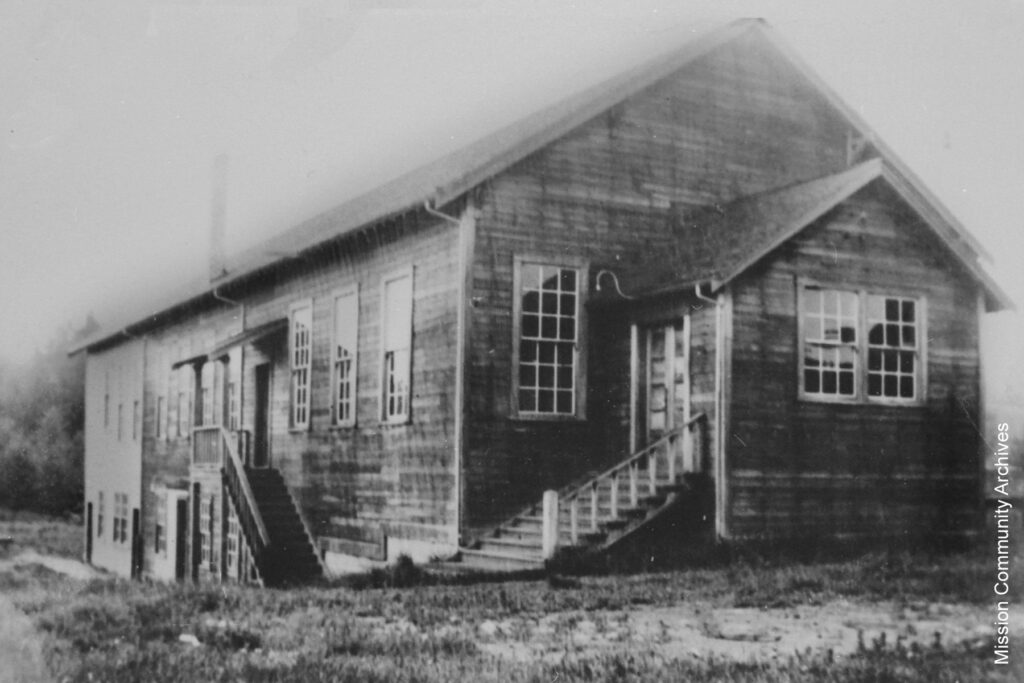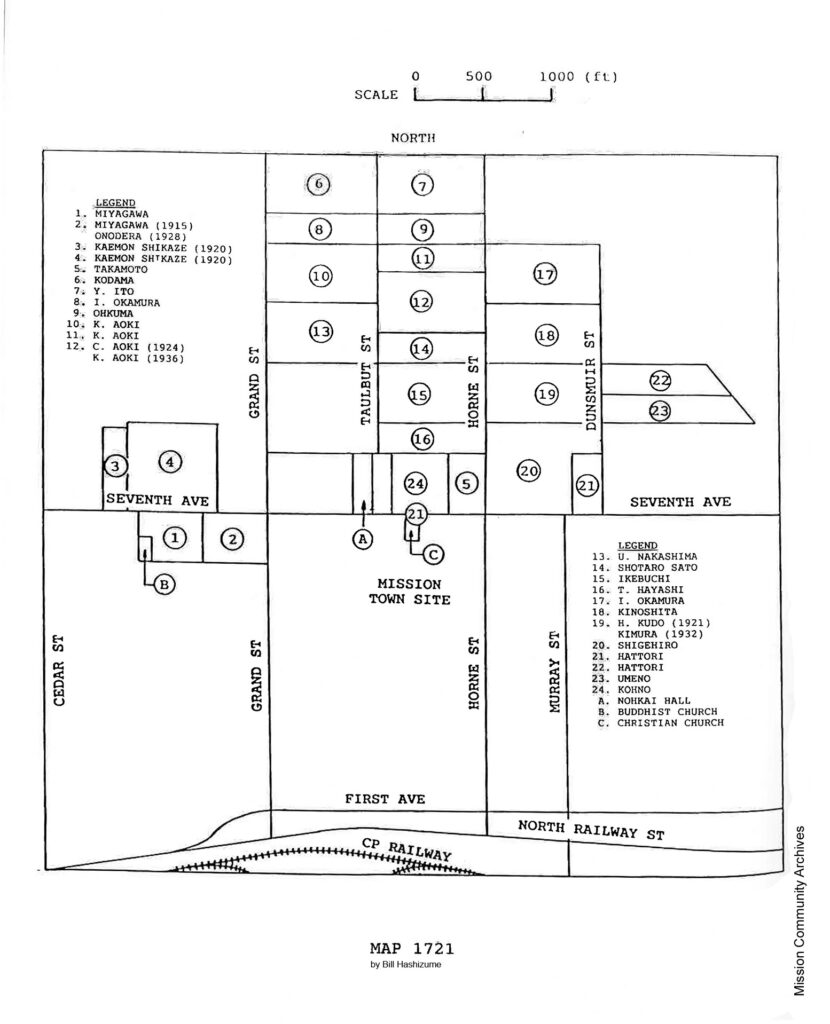
Also known as the Japanese Farmers Association, members of the branch in Mission decided to hold a meeting on February 5, 1920 to discuss building a Nohkai hall to fulfill the “need for a central organization where they could congregate, socialize, exchange views and discuss ways and means of improving their welfare and wellbeing.”[1] They had already been meeting in rented spaces since the early 1910s but saw the building of a hall as a means of agency, allowing them not only to meet and discuss crops, but to support their community’s educational needs, provide space for cultural events, as well as to work together to “maintain harmony with the white community.”[2]
Ten Nohkai members were chosen to head the building project with careful attention given to school needs.[3] It took until 1925 for a property to be purchased and a hall built, so in the interim, two temporary schools were established in unused buildings; one in the east of Mission on the property of Ichirohei Hisako, and the other in the west, the location of which is unknown, but is most likely the one mentioned which used lumber scraps.

Mrs. Ise Shirakawa taught at the west school, and Mrs. Hatsune Kudo at the east one, while Mrs. Eda Shikaze would fill in for either of them when necessary. About 45 children attended these two schools between 1920-1925, and when the hall was finished being built on 14th Avenue, only the younger children, ages six to seven, remained at the east school. The teachers at the new school in the Nohkai hall were Mr. Satomi Okamoto and his wife, but sadly, the life of the hall was short, for on April 23,1929, only four years after it was built, the hall burnt down.
The Japanese Language School had grown to approximately 80 students by this time and so in order to accommodate their needs, another committee was chosen from the Nohkai to plan a second hall. Masaru Okamura supervising the building, this time on 7th Avenue, and in less than a year, the completed building was opened in a grand ceremony on February 9, 1930, led by community elders Kumekichi Fujino and Tashiro Hashizume, who’s descendent, William T. Hashizume, provided much of the information for my research. Minoru and Hatsune Kudo became the new teachers, and as student numbers increased, they added another teacher to the staff in the mid-1930s.[4]
[1] William T. Hashizume. Japanese Community in Mission: A Brief History 1904-1942 (North York: Musson Copy Centre, 2002), 10. Mission Community Archives, Mission, BC.
[2] The Japanese Community in Mission, 11.
[3] The Japanese Community in Mission, 18.
[4] The Japanese Community in Mission, 18.